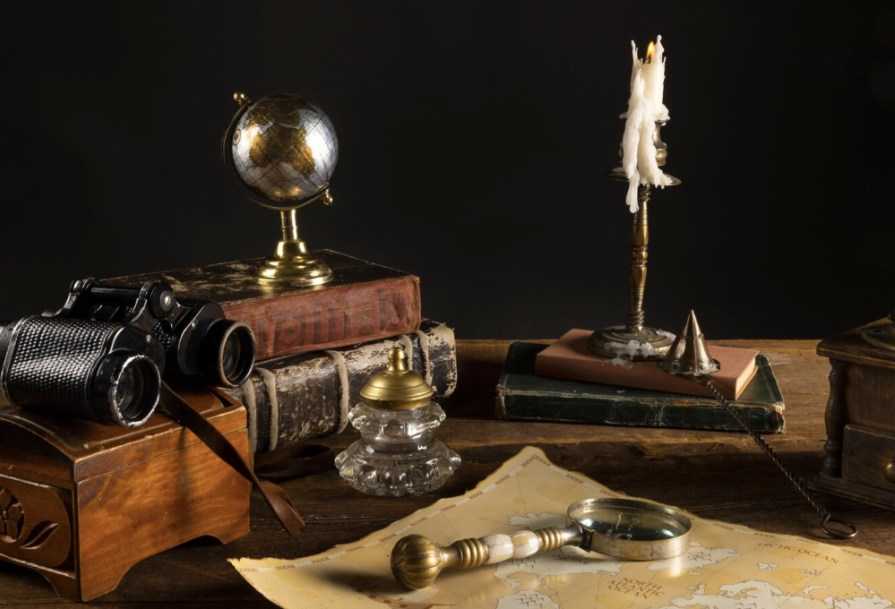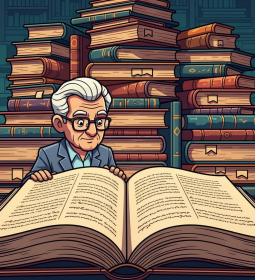In this article, we have collected seven examples of blatant injustice, when the authors of useful and brilliant inventions did not receive any reward for them.
Walter Hunt's Safety Pin
American from New York Walter Hunt was not bad as an engineer, but completely devoid of a commercial streak. In the 30s of the XIX century, he invented and created a working model of a sewing machine containing a needle with a hole. He did not patent: he decided that such machines would leave thousands of seamstresses without work. They say it's inhumane.
A dozen years later, a similar machine was created and patented by Ilaia Howe. The impoverished family of the inventor put pressure on Hunt, and he went to court. The victory in court turned out to be Pyrrhic: the court recognized the primacy for Hunt, but the patent still went to Howe.
In 1849, he came up with a new version of the safety pin, which is a single piece of wire curved in a certain way. This time he received a patent, but the happy owner was not for long: to pay a friend a debt of 15 bucks, he sold the document to W.R. Grace and Co for $ 400.
Enterprising buyers vividly established the production of pins of a new sample and perfectly cooked, and Hunt died in 1960 from pneumonia penniless in his pocket, even buried him in debt.
John Pemberton's Stake

Georgia pharmaceutical figure John Pemberton was wounded during the Civil War and hooked on morphine, using it as an anelgetic. From a painful addiction, he tried to recover with the help of coca.
On the basis of its leaves in 1886, the pharmacist created a remedy that also includes cola nuts and syrup from burnt sugar. He advised his invention to veterans of military operations as a means to move away from morphine dependence, as well as depression and neurasthenia.
Coca-Cola himself did not help, because nothing other than mental illness or deep persistence can explain the madness of commerce: the patent and the rights to the brand were sold in 1888 to his partner Aiza Kendler for a measly 1484 dollars - so much then cost a decent departure with a two-wheeler. Kendler became a millionaire and created a legend called The Coca-Cola Company.
Randy Schuller and the Spider-Man Costume
In the early 80s, Marvel organized a competition for artists among Spider-Man fans. The winner was an Illinois native, a high school student named Randy Schuller. He created the design of a fundamentally new form of superhero.
The idea was estimated at $ 220, but the usual image was not changed, instead using for the costume a character named Venom - an antihero, an alien parasite and an opponent of Peter Parker in one of the series of the franchise.
During one of the comic cons, Schuller reached the microphone and poured out a grudge against Marvel: it is not good to steal other people's ideas, you could somehow note, and money would be useful. Despite the fairness of the claims, the businessmen of the comic book world refused to share the profits.
Harvey Ball's smiley face

Strictly speaking, this is not an invention, but the case is indicative. In 1963, Massachusetts designer Bell received an order from an insurance firm: they needed a bright, positive and sympathetic symbol that could be placed on badges that agents would wear on their chests.
The execution of the order took about twenty minutes - exactly how much he drew a yellow smiling round muzzle. For this masterpiece, he was paid $ 45.
Insurance, however, liked. They stamped ten thousand badges, the symbol became known on a national scale, and then outside of America. Ball did not register the mark: it would cost an amount significantly exceeding his fee. This was immediately taken advantage of by businessmen from all over the world.
The Spain brothers from Pennsylvania began to make souvenirs with a smiley and various slogans on T-shirts, caps, cups, postcards, calendars and the like, and the Frenchman Lufrani issued a face on himself, saying that he invented it.
At first, Harvey kept the brand and tried to pretend that he was not upset a bit, but in the end he got older and seized the rights to the new version, adding initials to the smiley. The option was not destined to catch up with the popularity of random impromptu, so it did not work out to earn.
Karaoke Daisuke
Japanese drummer Daisuke Inue often played at parties and in the kobe bar, where visitors, having picked up rice vodka, desperately sang, and the musicians had to play along with this case. Some guests were so... smart that invited the ensemble on business trips, or even just home.

God was merciful, but just in case, the drummer with friends made 11 karaoke machines. According to the designer, he did not do anything unusual - only compiled what already was. In the course went a car radio, several amplifiers, the body from the phone and the coin acceptor from the machine for the sale of carbonated water. Several coils with interchangeable tapes with recording were added to the mechanism, and magazines with lyrics were placed in the booth.
To file an application for a patent, Danila-master (or rather, Daisuka) did not have enough ingenuity, which megacorporations did not hesitate to use. However, the method of obtaining income of the venerable Japanese is directly related to the invention - he sells poison for rats and insects that like to live in karaoke machines. In 2004, he received Schnobel, the anti-prize of the world for discovering a fundamentally new way of teaching tolerance towards people.
MP3 Karl-Heinz Brandenburg
German physicist from Ilmenau, a member of the Fraunghofer Institute Karl-Heinz Brandenburg was engaged in the issues of digital processing of the audio signal. During his work, he listened to Suzanne Vega's song Tom's Diner several hundred thousand times in order to study the compression algorithm on this example.
The result of the torment was the emergence of a new format, all the rights to which belong to the institute. The scientist is not offended: he received worldwide fame, a dozen medaleks and the opportunity to work for the future. And the singer became known by the nickname "Mother MP3".
Nick Holonyak and LEDs

An American originally from Ukraine, a physicist from the University of Illinois in the early 60s worked for General Electric and achieved the creation of the first LEDs that give visible light to humans. These diodes were originally obscenely expensive — priced as high as $200 per box — which limited use to laboratory equipment and expensive cars.
In the late 60's Nick was hired: the chemical giant Monsarto launched diodes into production, they were supposed to be used for indication in remotes, watches and calculators. Soon the company went bankrupt, but the demon had already broken free, and today LEDs surround us everywhere.












